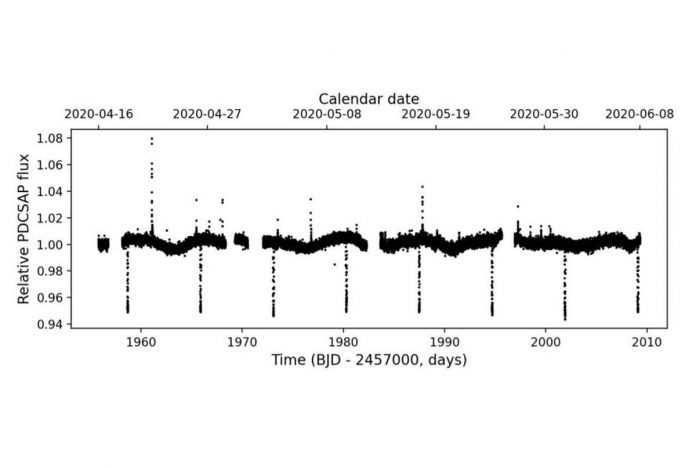An international team of astronomers have used NASA’s Transiting Exoplanet Survey Satellite (TESS) and detected a new brown dwarf. They have named the newly found object as TOI-2119b. It turns out to be about the size of Jupiter. But it is 60 times more massive than the solar system’s biggest planet. The discovery has been published in arXiv.org.
Brown dwarfs are intermediate objects between planets and stars. They occupy the mass range between 13 and 80 Jupiter masses. Many brown dwarfs have been detected to date. They orbit other stars are a rare find.
Astronomers reported the finding of another rare brown dwarf transiting an M-dwarf star. Only eight such systems have been detected, till date.
Astronomers have employed TESS to observe a nearby active M dwarf known as TOI-2119. It is located some 103.7 light years away from the Earth. A transit signal was found in the light curve of this star. A follow-up observational campaign has confirmed the brown dwarf nature of this signal.
TOI-2119b has a radius of about 1.08 Jupiter radii. Its mass is estimated to be 64.4 Jupiter masses. It orbits its host star every 7.2 days, at a distance of some 0.06 AU from it. The orbit of this brown dwarf has an eccentricity at a level of 0.337. It is inclined 88.4 degrees. The effective temperature of this object was 2,030 K.
The parent star TOI-2119 is approximately half the size and mass of our sun. It has a luminosity at a level of nearly 0.04 solar luminosities. It has an effective temperature of 3,621 K. Its age is estimated to be some 2.14 billion years. Astronomers added that the discovery makes TOI-2119 one of the most active M-dwarf stars known to host a transiting brown dwarf.
Astronomers concluded that TOI-2119b may have formed in an eccentric and close-in orbit. It is currently undergoing a quick inward migration from a farther out formation distance. It will take billions of years to complete. Astronomers funderlines that both scenarios may be equally plausible. They want further investigation of this system and want to confirm which one is true.

